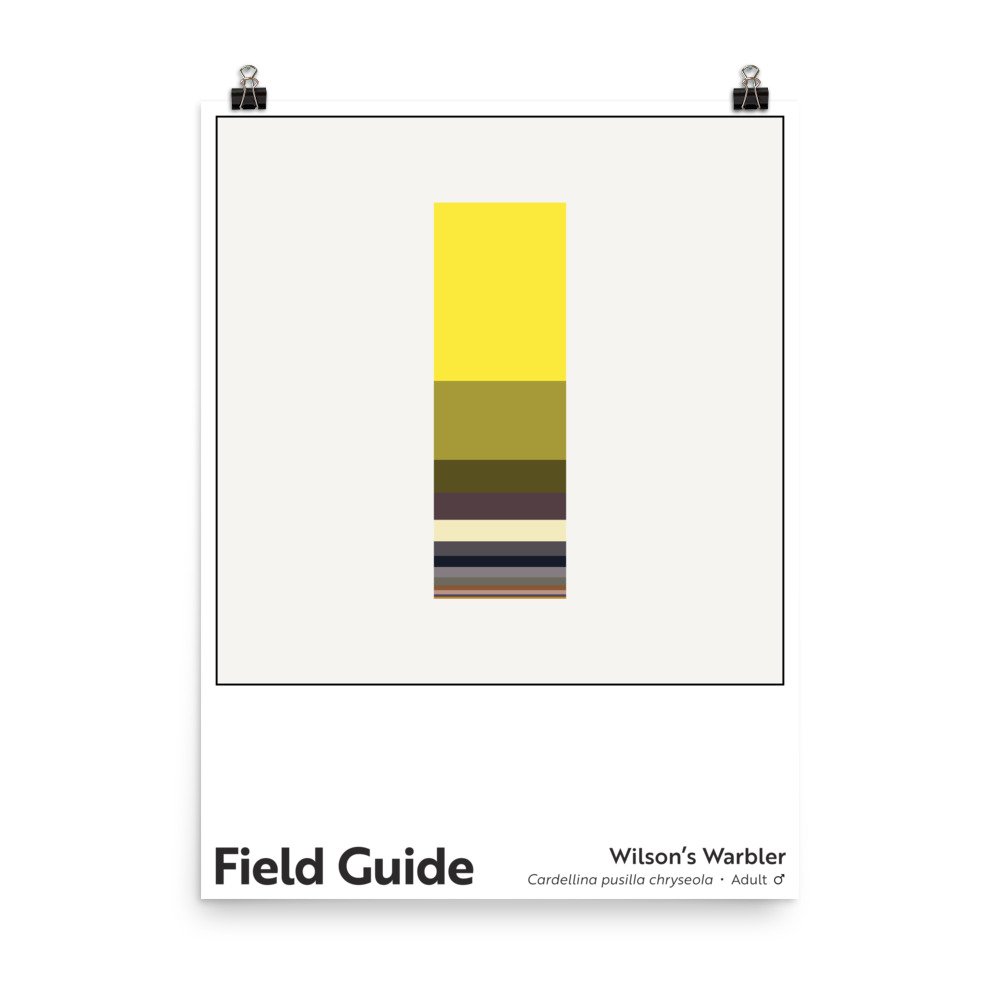Field Guide : Wilson's Warbler (Male)
Field Guide : Wilson's Warbler (Male)
Unlimited edition. 18 x 24 inch, museum-quality poster on matte paper.
The black crown of the male Wilson’s warbler is generally described as a “patch,” but I can’t help but see it as a kippah, or yarmulke. While I doubt this warbler is especially frum, its bold black cap stands out atop so much canary and olive. The black crown draws attention to the similarly dark eye just below. I sometimes see one of these warblers flitting through the coast live and valley oaks outside my studio window, and the “pop” of those blacks against so bright a yellow never fails to impress.
When it comes to subspecies variation, the farther west you find yourself, the brighter and more extensive the yellow on the warbler will be, whereas the olive coverage recedes a bit. To create this color column, I looked at the population I encounter here in California, Cardellina pusilla chryseola. This subspecies often shows some orange on its face (in addition to the yellow), but the birds I’ve spotted in my yard oaks have not displayed this, so I didn’t include the orange on my color map.
The Wilson’s warbler breeds throughout much of northern Canada and the western United States; that’s why I see them in California during spring and fall migration and throughout the summer, but they snowbird south to Mexico and northern Central America for the winter months. On their breeding grounds, they prefer dense deciduous woodland near water, as well as bogs and thickets, but they can also be found in coniferous forests if water is nearby. The warblers forage for insects and spiders by hopping and darting through tree canopies and bushes, waving and flicking their long tails as they go. It’s possible their quick movements and tail twitching alarm tree-dwelling insects and spiders, causing them to flee – a fatal mistake; the warblers glean whatever tasty morsels reveal themselves. If a warbler sees an insect on the wing, it will sally out from the vegetation and do some flycatching. Although insects make up the bulk of the Wilson’s warbler’s diet, it won’t turn its beak up at berries. 🐜🕷️🫐😋
Note: These archival poster prints feature rich, appealing colors. I encourage customers to take care in handling them until they are framed/protected for display; the darker colors on the matte paper can be scratched. They ship rolled, so customers need to flatten them before framing (or have their framer do so).
Charitable Sales Model: Whenever one of these poster prints is purchased, a charitable contribution equal to 10% of the print’s cost (or $3.60) is made to a nonprofit working to tackle environmental or social challenges. Read more about my charitable sales model here.

